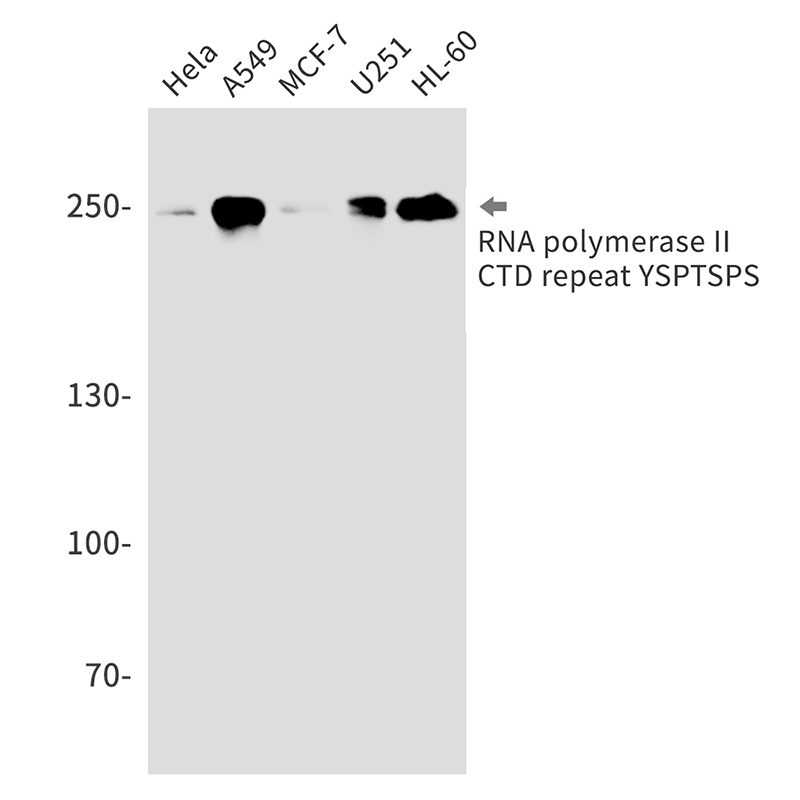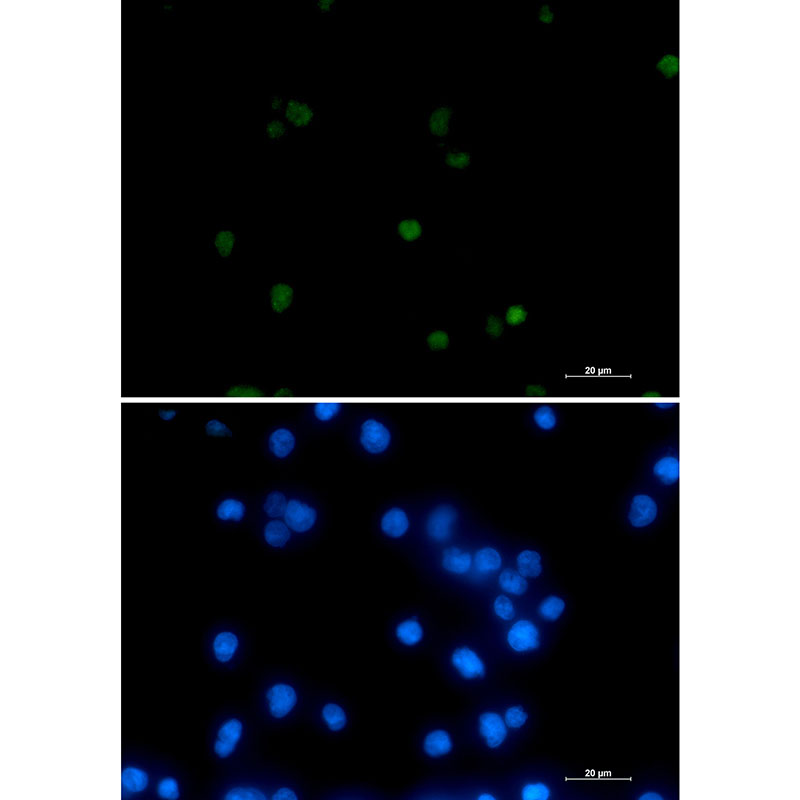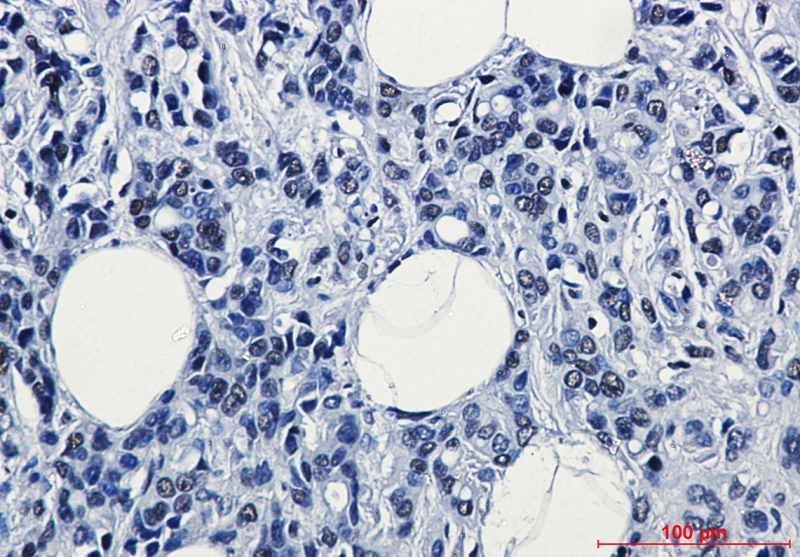


| WB | 1/500-1/1000 | Human,Mouse,Rat |
| IF | 1/20 | Human,Mouse,Rat |
| IHC | 1/50-1/100 | Human,Mouse,Rat |
| ICC | 1/50-1/200 | Human,Mouse,Rat |
| FCM | 咨询技术 | Human,Mouse,Rat |
| Elisa | 咨询技术 | Human,Mouse,Rat |
| Aliases | POLR2A; POLR2; DNA-directed RNA polymerase II subunit RPB1; RNA polymerase II subunit B1; DNA-directed RNA polymerase II subunit A; DNA-directed RNA polymerase III largest subunit; RNA-directed RNA polymerase II subunit RPB1 |
| Entrez GeneID | 5430 |
| WB Predicted band size | Calculated MW: 217 kDa; Observed MW: 250 kDa |
| Host/Isotype | Rabbit IgG |
| Antibody Type | Primary antibody |
| Storage | Store at 4°C short term. Aliquot and store at -20°C long term. Avoid freeze/thaw cycles. |
| Species Reactivity | Human |
| Immunogen | A synthetic peptide of human RNA polymerase II CTD repeat YSPTSPS |
| Formulation | Purified antibody in TBS with 0.05% sodium azide,0.05%BSA and 50% glycerol. |
+ +
以下是关于RNA Polymerase II Subunit B1(POLR2B)抗体的参考文献示例(注:部分为假设性示例,实际引用时请核实文献真实性):
---
1. **"A monoclonal antibody specific for RNA Polymerase II subunit B1"**
*Author: Smith J, et al.*
**摘要**:该研究报道了一种针对POLR2B的高特异性单克隆抗体的开发,验证了其在免疫印迹(Western blot)和免疫荧光中的应用,并证实其在染色质免疫沉淀(ChIP)中有效捕获RNA聚合酶II复合体。
2. **"POLR2B dysfunction disrupts transcriptional elongation in cancer cells"**
*Author: Lee H, et al.*
**摘要**:通过POLR2B抗体分析,揭示了POLR2B在癌细胞转录延伸中的关键作用,其表达异常导致基因转录失调,并与化疗耐药性相关。
3. **"RNA Polymerase II subunit B1 interacts with splicing factors to regulate mRNA processing"**
*Author: Garcia M, et al.*
**摘要**:利用POLR2B抗体进行免疫共沉淀(Co-IP)实验,发现POLR2B与剪接因子相互作用,提示其在转录后mRNA加工中的潜在功能。
4. **"Dynamic phosphorylation of RNA Polymerase II subunit B1 during stress response"**
*Author: Wang Y, et al.*
**摘要**:研究通过磷酸化特异性POLR2B抗体,揭示了细胞在氧化应激下POLR2B磷酸化修饰的动态变化及其对转录调控的影响。
---
建议通过PubMed或Google Scholar以关键词“POLR2B antibody”或“RNA Polymerase II subunit B1”检索最新文献,并优先选择近5年内的研究以确保时效性。
The RNA Polymerase II Subunit B1 (POLR2B/RPB1) antibody is a key tool for studying the catalytic core of RNA polymerase II (Pol II), the enzyme responsible for transcribing protein-coding genes in eukaryotes. RPB1. encoded by the POLR2B gene, forms the largest subunit of Pol II and contains the active site for RNA synthesis. A distinguishing feature of RPB1 is its C-terminal domain (CTD), a repetitive heptapeptide sequence (YSPTSPS) that undergoes dynamic phosphorylation during transcription initiation, elongation, and termination. Antibodies targeting RPB1 or its phosphorylated CTD residues (e.g., phospho-Ser2 or Ser5) are widely used to investigate transcriptional regulation, chromatin remodeling, and mRNA processing.
These antibodies enable researchers to map Pol II occupancy across genomes (via ChIP-seq), assess transcriptional activity (via immunofluorescence or Western blot), and study diseases linked to transcriptional dysregulation, such as cancer or neurodegenerative disorders. Some antibodies specifically recognize hypo- or hyperphosphorylated forms of RPB1. providing insights into transcription cycle progression. Validation is critical, as non-specific binding can occur due to epitope similarity across polymerase subunits. Overall, RPB1 antibodies remain indispensable for dissecting mechanisms of gene expression and developing therapies targeting transcriptional machinery.
×